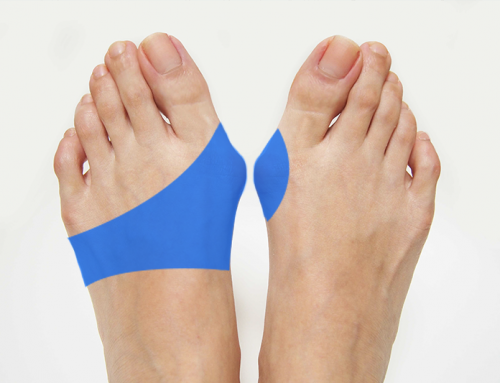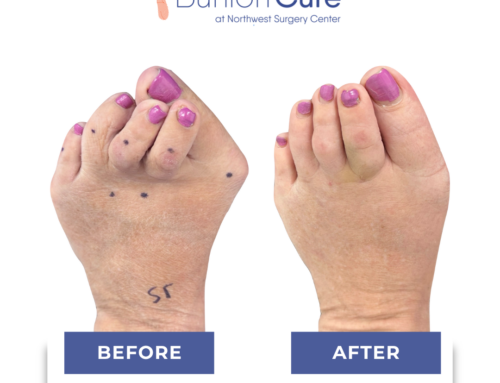Bunions do not appear out of thin air. Rather, they usually form as a result of years of pressure on the foot due to some kind of misalignment. While they may start out small and seem relatively innocuous, the truth is that bunions only tend to get worse over time. Untreated bunions can become quite large and very painful. At this point, you might be wondering how can I stop my bunion from getting worse? Fortunately, minimally invasive bunion surgery is the best and most effective way to treat and remove bunions for good. We’ll explain further here:
Bunion Treatment Methods
By the time you notice a bunion, it’s almost always too late to do anything to get rid of it on your own. Though there are a myriad of over-the-counter products like bunion sleeves, correctors, and pads on the market, none of them will treat the root cause of the bunion. At best, they may provide some level of short-term pain relief.
If you begin to experience severe pain or swelling as a result of a bunion, you may consider icing the affected area. Again, this won’t remove the bunion, but it may offer some temporary relief.
Bunion Removal Surgery
Broadly speaking, it’s advisable to have bunion removal surgery as soon as you become aware of the issue. All else being equal, smaller bunions are easier for surgeons to remove and require less recovery time to get over. However, it’s important to note the difference between the two main types of bunion removal surgery –– traditional and minimally invasive –– as well.
Traditional bunionectomies can be painful procedures that may leave large scarring along the foot and require extensive recovery time. Some individuals may not be able to resume their regular activities without pain for six months or more following traditional bunion surgery. Obviously, this is far from ideal.
Minimally invasive bunion surgery, conversely, is an outpatient procedure that is quick, much less painful and taxing, and allows most people to resume their normal routine within days. All told, minimally invasive bunion surgery recovery may take between 1-5 weeks, but you’ll be up on your feet walking after surgery.
To learn more about our minimally invasive surgery or to inquire about getting a bunionectomy, contact the experts at The Bunion Cure or download our free “Guide to Minimally Invasive Foot & Ankle Surgery”!
Preventing Bunions
While you may not be able to stop a bunion from getting worse by yourself, you can take certain steps to prevent bunions from forming in the first place. The first, and perhaps the most effective way to protect yourself from developing bunions is to change your footwear. Tight-fitting shoes –– like high heels –– constrict the foot and often contribute to bunions. So, switching your shoes could help you maintain good foot health. Additionally, individuals can perform regular foot and toe stretches in order to keep their joints and muscles aligned. To conclude, some people may have a genetic disposition to developing bunions, or they may have a foot shape that could be susceptible to bunions. In such cases, it’s a good idea to speak with a medical professional to discuss prevention options. At the very least, you should monitor foot health closely. By identifying and treating a bunion early, you can save yourself a lot of pain and frustration.
Contact Us
At Northwest Surgery Center, we strive to deliver the best possible experiences and outcomes for our patients. Our expert team only uses the most advanced methods and techniques to treat foot-pain problems. We can help you get back to living your life to the fullest ––pain free. Contact us here to learn more or to schedule a consultation today. You don’t have anything to lose except painful bunions!

About the Author
Dr. Jordan Sullivan, DPM, is a board-certified podiatrist at Northwest Surgery Center specializing in minimally invasive foot and ankle procedures. He’s passionate about helping patients get back on their feet faster with less downtime.
Learn more about Dr. Sullivan here.






